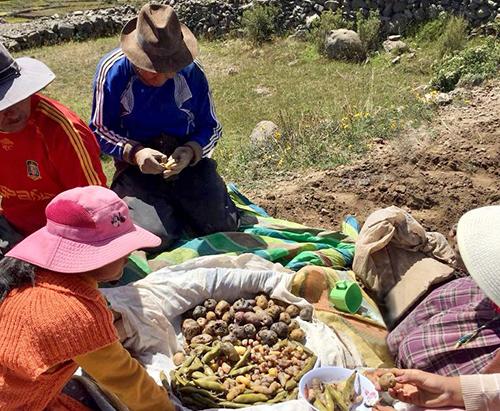
Winners announced in the 2022 Postgraduate Fieldwork Photographic Competition
The Department of Social Anthropology is delighted to announce the winners in this year’s Postgraduate Fieldwork Photographic Competition.
The judges found it even more challenging than usual to rank this year’s submissions, because they were all excellent in quality, as well as very diverse in their strengths. Every student’s photographs were in the ‘top three’ for at least one of the judges, and when the judges’ rankings were mathematically combined, the field was very close. We are grateful to all students for submitting their entries, and to all the judges: Naomi Richman, Adam James Smith, Sophia Hornbacher-Schönleber, and Tim Cooper.
The prizewinners this year are, in a tie for first place, Anel López de Romaña and Devi Chakrabarti, and in third place, Tim Pöhlmann. Students enter their photographs from their fieldwork research and these are diverse. All the images can be viewed here and are also linked in this news article by person.
Anel’s fieldwork encapsulated a Food ethnography in the Peruvian Andes: foodways, women and subsistence family agriculture in changing domestic units in Amantaní, Puno. Whilst Devi’s research in Nepal explores the Afterlives of a disaster: post-earthquake reconstruction and spiritual life in Bhaktapur.
Tim meanwhile, focuses his research on Agriculture in a depopulated place, studying in the Azores.
Here are compilations of the judges’ appreciative comments:
Anel López de Romaña’s images are stark and impactful, and are beautifully explicated in accompanying text but speak volumes on their own terms. Despite the beauty of the persons, fabrics, and landscapes, these images possess a minimalism and simplicity that place the viewer right there among the candidate’s interlocutors, and teach us about the importance and all-consuming regularity of maintaining foodways. Anel’s strong images, and anthropological context described in accompanying text really brings the images to life. She has also provided a nice variation of settings across the images which adds much in the way of context vis-à-vis the intersection of food, agriculture and family in Puno.
Devi Chakrabarti submitted captivating, colourful, and dynamic pictures of different masked figures (although, it seems from a single event), providing variety in composition. Image 2 leads well into image 3. Image 2 piques our interest with the angle from above looking down, leading us into image 3 that offers more context, depth, and a better sense of place and scale for the event. The light illuminating the mask in image 2 is breath-taking, coupled with the movement of event attendees in the shadows surrounding the masked individual. Image 3 features strong depth of field and the subdued colour palette is gorgeous. The accompanying text is clear and detailed. Devi’s wonderful, standalone images, convey lots of movement and atmosphere. The second image shows an interesting bird’s eye view and use of focus, with striking facial expressions in the third image especially in contrast to front-on shot of the dancer/deity.
Tim Pöhlmann’s evocative images work very well as an ensemble and alongside the text; very dynamic scenes, capture emotive scenes of a fieldwork, humans and animals close-up; at the same time very successful image composition, multiple layers in each picture, leading lines; life-worldly significance of themes of lost land and holding tight to cultivation find palpable expression in the pictures. There is nice diversity in these images, depicting agricultural activity, relaxed conversation, and a festival unfolding, respectively. Image 2 is my favourite – I especially enjoy how animated the man is in the left foreground and appreciate the colour palette of greens, greys, blues, and browns. I appreciate seeing the way animals are utilized in images 1 and 3 and the sense of motion in both of these shots. The varied expressions in the faces of the men and their stances captured in the second image drew my attention. The accompanying text also helps make sense of this. As a whole, the collection of images evoke the complex relationship between humans, land and animals that the student’s project explores.
The other entrants were: Sean French, Xinying (Tracy) Liu, Tuya Shagdar, and Erin Williamson.
